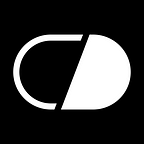How we at Crazydes work on the discovery phase of UX projects
Do you have an idea or concept for an application, then you must perform this phase for achieving product success. For every project at Crazydes Design Studio, we follow the double diamond process. The double-diamond diagram introduced by the UK Design Council in 2005
Recently, they published a new model. They don’t call it Double Diamond but Framework For Innovation:
Design Council’s framework for innovation helps designers and non-designers across the globe tackle some of the most complex social, economic, and environmental problems. It is a fundamental part of our work: enabling us to support the public, private, and third sector organizations we work with transform the way they develop and deliver their services.
We will explain more about the new model as well as the old model in another blog. Meanwhile, I would jump straight into our discovery phase in every UX project
Discovery
Definition: A discovery is a preliminary phase in the UX-design process that involves researching the problem space, framing the problem(s) to be solved, and gathering enough evidence and initial direction on what to do next. Discoveries do not involve testing hypotheses or solutions.
Sometimes, a team will carry out a discovery on a product that is already planned to be built. In that case, it’s no longer termed as a discovery, as we are not exploring what the user actually needs to use the product. So, it will be requirements gathering exercise on which the client wants to confirm that their solution is the best 😋
In the discovery phase of every UX project, we at Crazydes try to: research more on the project or problem which the product is trying to solve, notice new things that the users are familiar with the existing scenario, and gather insights.
It’s about learning as much as you can about product space, users, business goals.
On this discovery phase, we generally perform the following
- Stakeholder interviews
- Secondary Research
- Primary Research
On stakeholder interviews, we are trying to achieve the following objectives
- Why are we doing this?
- To Whom are we doing it for?
- What value should it provide?
- How will we measure success?
- What can we really do?
Sometimes, our valuable clients generally support with few of the details for the discovery phase. But still, we work ahead in achieving the following outcomes for the project.
- Understanding users: Through user research, the project team achieves an understanding of who the users are and how they are affected by a particular problem, as well as what they need, desire, and value from a solution (and why).
- Understanding of the problems to be solved and of the opportunities: Through investigative work, the team understands how and why the problem(s) occur, what effect the problem has on users, as well as on the organization. It understands the magnitude of the problem and opportunities for the organization, product, or service.
- Shared vision: During discovery, the team works with stakeholders to understand overarching business objectives and desired outcomes and get answers to questions such as ‘what do we want to achieve?’, or ‘what does success look like?’.
This approach, in turn, focuses the team on the problems (and later the solutions) that will have the greatest impact on that outcome. The team should also have an idea of what to measure going forward, to understand whether the solution is working towards the desired outcome.
For secondary research, we generally collect data that has already been produced. It can be historical, qualitative, or quantitative. While on the primary research we focus on the data from the users.
In conclusion, try to achieve what the end-user needs and thereby satisfy the business goals.
